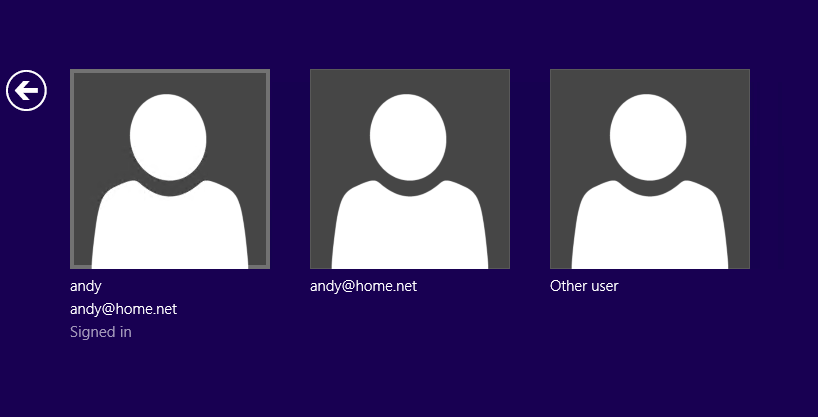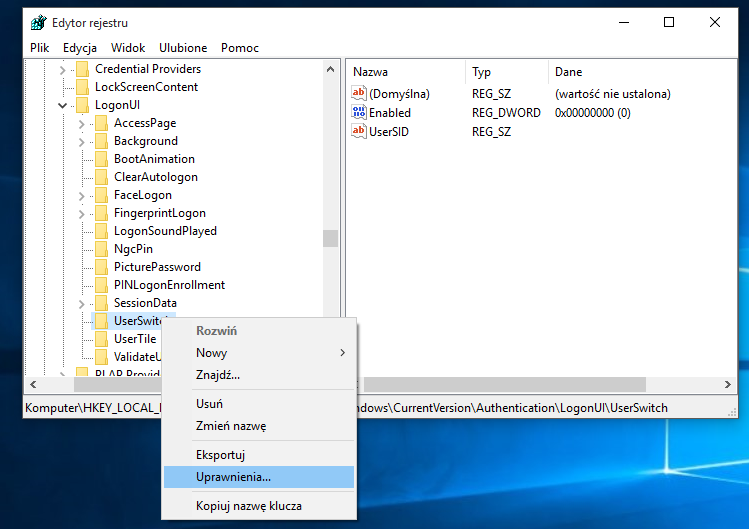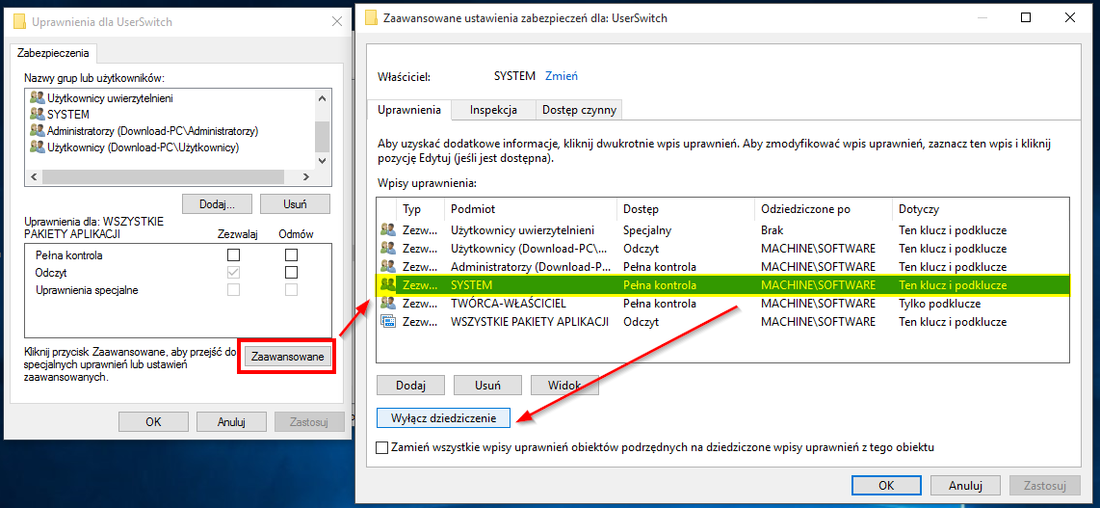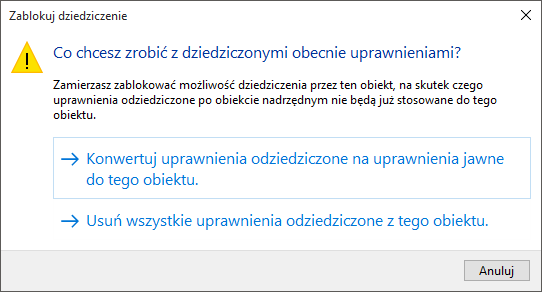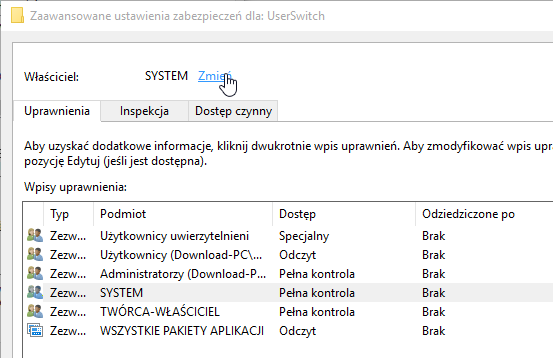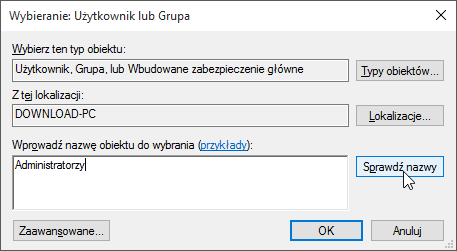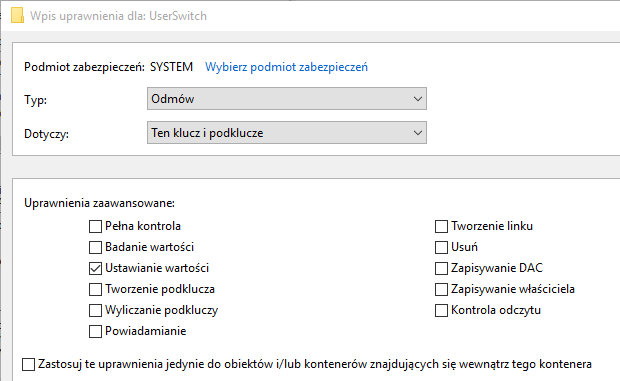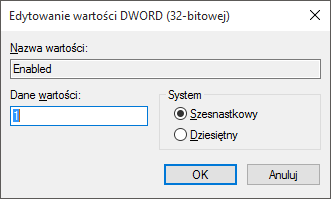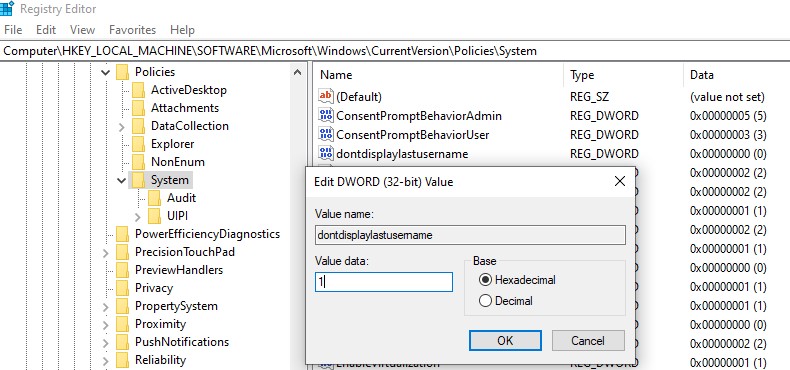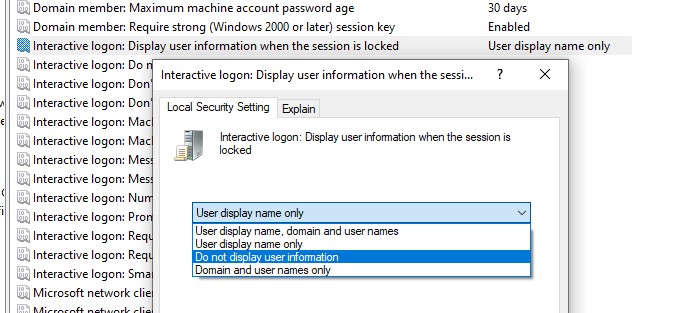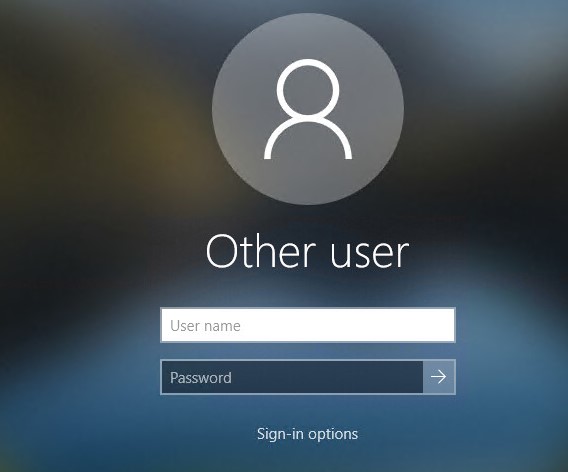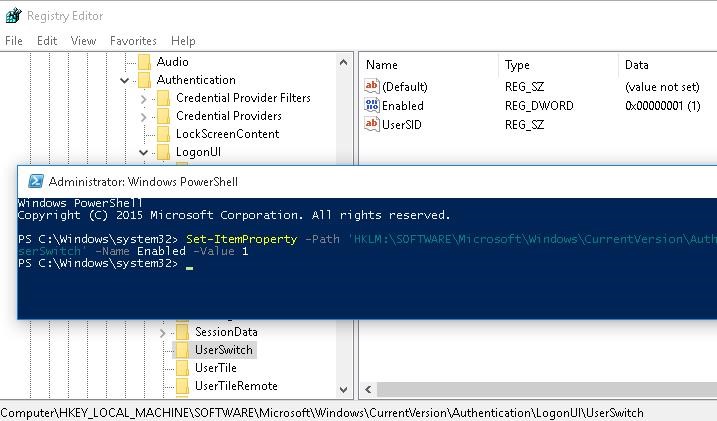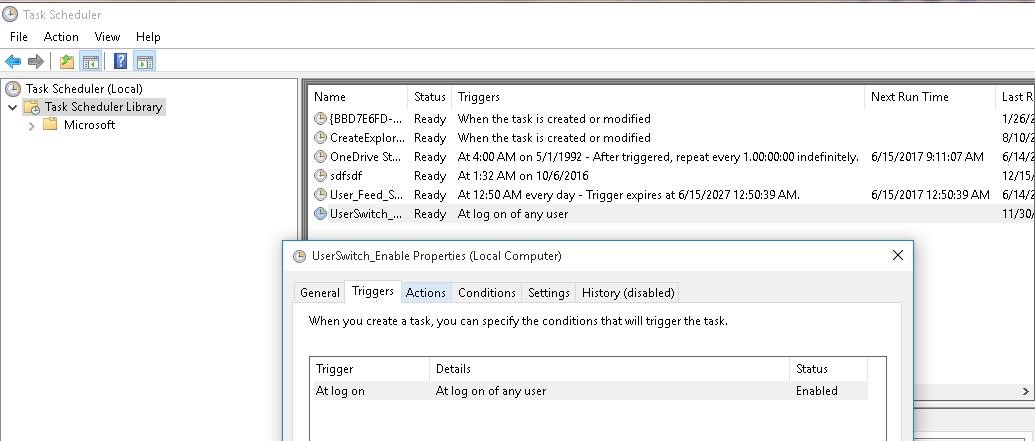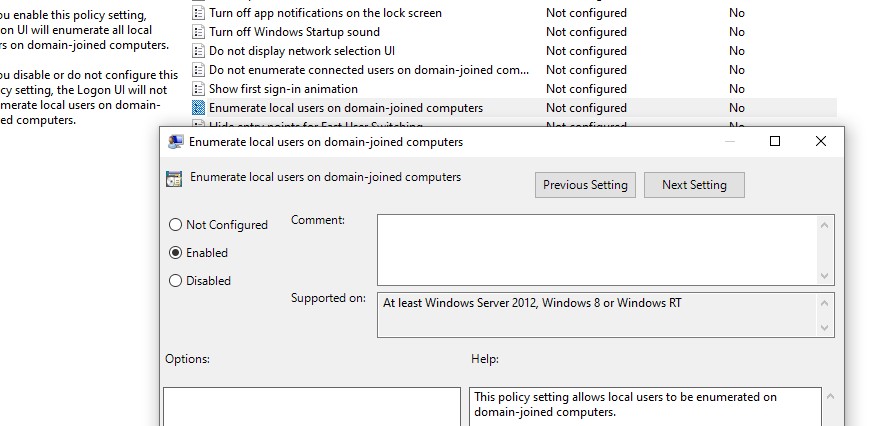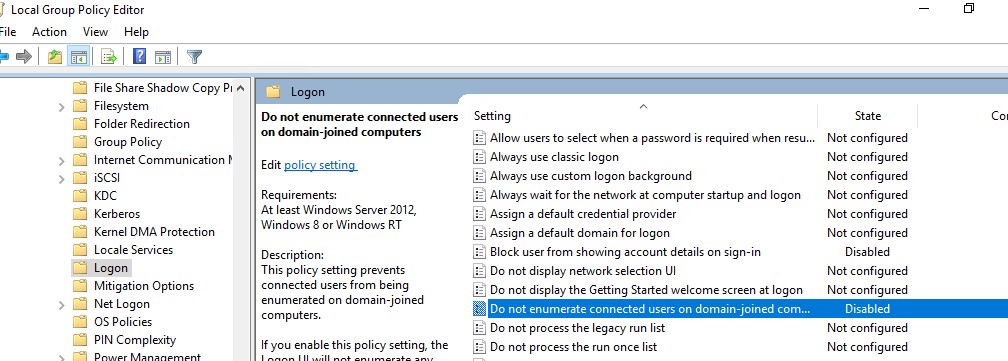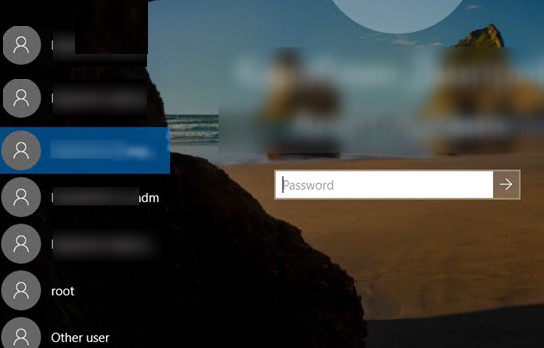Software microsoft windows currentversion authentication logonui userswitch
Как отключить автоматический вход в последнюю использованную учетную запись в Windows 8 / 8.1 / 10
В Windows 8 и новее мы обнаруживаем довольно раздражающую функцию, связанную с несколькими учетными записями пользователей. Система автоматически регистрируется в последней используемой учетной записи. Половина проблем, когда учетная запись имеет пароль, — тогда мы можем выбрать другого пользователя для входа в систему. Однако, если учетная запись без пароля, мы войдем в систему, не спрашивая. Как отключить его?
Эта опция становится еще более раздражающей, когда все учетные записи пользователей установлены без паролей. В этом случае система даже не даст нам возможность выбрать пользователя — после включения компьютера мы немедленно войдем в учетную запись, которая использовалась в последний раз. Чтобы войти в другую учетную запись, вы должны подождать, пока загрузится рабочий стол последнего пользователя, а затем мы должны выйти из него и снова войти в вашу учетную запись.
Как всегда, отобразите экран выбора пользователя в Windows 8 / 8.1 или 10
Простое включение опции, которая заставляет пользователя выбирать при каждом запуске системы, ограничена изменением одного значения в редакторе реестра. К сожалению, система автоматически восстанавливает настройки входа по умолчанию после перезагрузки компьютера, и здесь начинается более тяжелая задача — мы должны дополнительно заблокировать систему от редактирования нашей модификации, изменив разрешения в реестре.
Шаг 1. Перейдите в системный реестр и измените настройки разрешений для соответствующего ключа
Во-первых, мы должны войти в системный реестр и перейти к опции, которая отвечает за принуждение пользователя к выбору перед входом в систему. Мы должны полностью контролировать этот вариант, чтобы система не могла изменить то, что мы установили.
Для этого нажмите комбинацию клавиш Windows + R, и затем введите начальное окно смерзаться. Подтвердите команду с помощью OK — на экране появится редактор реестра. В редакторе реестра перейдите к следующему пути, расширив дерево ключей в левой части окна:
HKEY_LOCAL_MACHINE \ SOFTWARE \ Microsoft \ Windows \ CurrentVersion \ Authentication \ Logonui \ UserSwitch
Прежде чем мы вносим изменения в ключ UserSwitch, вы должны взять на себя ответственность за это и заблокировать закон модификации. Мы нажимаем на клавишу UserSwitch щелкните правой кнопкой мыши, а затем выберите в раскрывающемся меню «права доступа».
Появится новое окно настроек разрешения. В нижней части окна нажмите кнопку «Дополнительно». На этот раз мы перейдем к следующему окну со списком сущностей, которые имеют доступ к ключу UserSwitch.
Список объектов будет «SYSTEM». Отметьте его левой кнопкой мыши и нажмите под ним кнопку «Отключить наследование». В новом окне мы подтверждаем завершение работы, выбрав первый вариант «Преобразование прав, унаследованных к явным разрешениям для этого объекта».
Вы заметите, что в списке объектов в столбце «Inherited after» отображается значение «None». Владелец ключа по-прежнему «СИСТЕМА», поэтому мы должны его изменить. Для этого нажмите на кнопку «Изменить» рядом с полем «Владелец».
Появится новое окно выбора пользователя или группы. В поле «Введите имя объекта для выбора» введите «Администраторы» и нажмите кнопку «Проверить имена». Значение должно автоматически дополнять правильный путь к группе администраторов, включая имя нашего компьютера.
Мы подтверждаем смену владельца кнопкой OK. Теперь элемент «Имя_компьютера \ Администраторы» должен отображаться в поле «Владелец». Мы помещаем поле под «Заменить владельца для субподрядов и объектов» внизу.
Как Computer Adminstrators, мы теперь являемся владельцем ключа, ответственного за выбор пользователя для входа в систему. Теперь мы должны заблокировать систему от изменения значения — для этого в списке объектов мы снова маркируем элемент «SYSTEM», а затем «Edit».
Мы устанавливаем все как на скриншоте выше, то есть:
Мы подтверждаем изменения с помощью кнопки «ОК», а затем «Применить» в окне дополнительных настроек, а также закрываем их кнопкой «ОК». Мы вернемся в окно настроек разрешений с просмотром групп — мы также закроем их кнопкой OK.
Шаг 2. Отключите автоматический вход в последнюю учетную запись и принудительно выберите пользователя.
Теперь, когда ключ «UserSwitch» полностью принадлежит нам, и система не имеет возможности вмешиваться в ее значение, в конце мы можем активировать указанную опцию выбора пользователя. После выбора ключа UserSwitch мы обращаем внимание на правую часть редактора реестра.
Мы находим здесь запись с именем «Включено». Дважды щелкните его левой кнопкой мыши, а затем в новом окне редактирования значений измените его с «0» на «1».
После изменения значений мы закроем окно редактора реестра и перезагрузим компьютер. Теперь мы заметим, что даже если все учетные записи пользователей лишены паролей, система автоматически не вступает в систему ни с одним из них — вместо этого отображается экран выбора пользователя, и мы можем выбрать учетную запись для входа в систему.
[Обновление]
Что делать, если все данные возвращаются к исходным настройкам после входа в систему с другим пользователем?
Откройте системный блокнот, а затем вставьте в него следующую выдержку:
REG ADD HKLM \ SOFTWARE \ Microsoft \ Windows | CurrentVersion | Аутентификация \ LogonUI \ UserSwitch / v Включено / t REG_DWORD / d 1 / f
Сохраните файл, например, в каталоге «C: \ User’s Choice». Выберите место хранения, чтобы файл не мог быть удален. Этот файл отвечает за автоматическое изменение значения записи «Включено» в ключе «Userswitch» на «1».
Теперь нам нужно, чтобы этот файл запускался каждый раз, когда все регистрируются. Для этого мы будем использовать планировщик заданий и зададим задачу автоматического запуска файла каждый раз при запуске компьютера.
Перейдите в меню «Пуск» и выполните поиск «Планировщик задач». Запустите его, а затем в правой части окна «Расписание» выберите «Создать задачу».
В новом окне вкладки «Общие» укажите имя для задачи, например. «WyborUzytkownika», и установите флажки «Выполняется независимо от того, вошел ли пользователь в систему» и «Запуск с наивысшими привилегиями». В поле «Настроить для:» выберите версию вашей системы (например, Windows 10).
Перейдите на вкладку «Триггеры» и нажмите «Новый». В поле «Запустить задачу» выбрать «При входе в систему» и установите флажок «Любой пользователь». Нажмите OK для подтверждения.
How to Show/Hide All User Accounts from Login Screen in Windows 10?
By default, the logon screen in Windows 10/8.1 and Windows Server 2016/2012 R2 displays the account of the last user who logged in to the computer (if the user password is not set, this user will be automatically logged on, even if the autologon is not enabled). However, it is possible to display all user accounts on the welcome screen in Windows 10. You can configure different behavior of this function: you can show the last logon username, hide it, or even list all local or logged domain users.
How to Hide User Account from Windows Logon Screen?
Displaying the account name on the Windows login screen is convenient for users, but reduces the computer security. An attacker who gained local access to a computer will have to pick up only a password (for this there are various ways of social engineering, brute force attacks, or a banal sticker with a password on the monitor).
Also, you can hide the username on the login screen through the registry. To do this go to the registry key HKEY_LOCAL_MACHINE\SOFTWARE\Microsoft\Windows\CurrentVersion\Policies\System, create a new DWORD parameter named dontdisplaylastusername with the value 1.
Additionally, you can hide the username on a locked computer. To do this, in the same GPO section you need to enable the policy “Interactive logon: Display user information when the session is locked” and select the value “Do not display user information”.
A registry parameter named DontDisplayLockedUserId in the same registry key with a value of 3 corresponds to this policy setting.
Now on the computer login screen and on the Windows lock screen, an empty fields for entering a username and password are displayed.
How to Show All Local User Account on Login Screen in Windows 10?
In Windows 10 / 8.1, you can list all local user accounts on the welcome screen. To log in to the computer, the user just needs to click on the desired account and specify its password.
To display all local users on the Windows login screen, you need to change the value of Enabled parameter to 1 in the following registry key: HKEY_LOCAL_MACHINE\SOFTWARE\Microsoft\Windows\CurrentVersion\Authentication\LogonUI\UserSwitch. You can change this parameter through the RegEdit GUI, Reg Add cli command or Set-ItemProperty PowerShell cmdlet:
Reg Add HKLM\SOFTWARE\Microsoft\Windows\CurrentVersion\Authentication\LogonUI\UserSwitch /v Enabled /t REG_DWORD /d 1 /f
However, the Windows automatically resets the value of the Enabled parameter to 0 at each user logon. In order to always change the registry value to 1, it’s easier to create a new task in the Task Scheduler that will run at user logon.
The Scheduler task must run one of the commands shown above. You can create this task manually using the taskschd.msc graphic console. But it seems to me that it is much easier to create a Scheduler task using PowerShell. In our case, the commands to create a new task may look as follows:
Make sure that the task appeared in Windows Task Scheduler (taskschd.msc).
Log off and then log on again. The task must start automatically and change the value of Enabled registry parameter to 1. Check the current value of the parameter. As you can see, it is 1:
After the next reboot, all local user accounts will be displayed on Windows 10/8.1 logon screen instead of the last one.
Showing Logged Domain Users on Windows 10 Login Screen
If several domain users use one computer, on the welcome screen you can display a list of users who have local active/disconnected session (users will only be displayed if they are logged in, for example, when using public computers, kiosks, an RDS server or its Windows 10 analogue).
After that, the welcome screen will display a list of accounts with active sessions that have logged in but have been disconnected. It is enough for the user to log in once, and after that just select an account from the list and enter the password.
How to Hide Specific User Account from the Sign-in Screen?
The Windows Welcome screen displays users who are members of one of the following local groups: Administrators, Users, Power Users, Guests.
You can hide any user from the list on the Windows 10 sign-in screen by running the command:
reg add «HKLM\SOFTWARE\Microsoft\Windows NT\CurrentVersion\Winlogon\SpecialAccounts\UserList» /t REG_DWORD /f /d 0 /v UserName
Managing Exchange Mailbox Inbox Rules with PowerShell
How to Delegate Control and Administrator Privileges in Active Directory?
Related Reading
How to Disable NetBIOS and LLMNR Protocols in.
Enable Windows Lock Screen after Inactivity via GPO
Can’t Copy and Paste via Remote Desktop (RDP).
UAC: This App Has Been Blocked for Your.
How to Unlock a File Locked by Any.
19 comments
Mine displays all of the accounts by default. How come?
This is absurd. If this is actually the setting- which has taken an hour of googling to find- to show all the local users on the login screen, the fact that it has to be set and then a timed script created to keep it set is… nucking futs. What a hate joke of an OS.
I agree completely. It’s as if none of the developers considered the basics only the settings one would need to perform a hostile takeover of IBM. I’ve been chasing a way for days to login as any other user in Windows 10. There’s no way to switch users and no solution anywhere. Ask Microsoft? Their response is “There’s no way to switch users in Windows 10? Have you tried logging out?” (Almost took a hostage.)
Arf! This is not about local account, but this tuto is about domain account. When you have severals doamain users on the same domain computer, its interresting to show all users account on the start menu.
By default, they have to choose “other user” and type both their ID and password. So with this method, they just have to click on appropriate username and type password.
For information, this doesn’t work. Scheduled task is working on all users, the reg value switch from 0 to 1 at startup for all users but on startup screen, only last user logged appear.
Not working. MS probably killed it in an update.
You have to change the permissions of the userswitch reg key : change the owner to Admin group and enable full control of the key for Admin and disable the write permission for SYSTEM. This is working since Windows 8.
@Roland – not an adminstrator but often end up having to do deskside support. How do I do what you suggested?
You need to run this as admin since admin privilege is required to get ownership of the userswitch key owned by the system account.
Software microsoft windows currentversion authentication logonui userswitch
This forum has migrated to Microsoft Q&A. Visit Microsoft Q&A to post new questions.
Asked by:
Question
How do I make sure that Windows 8 will always display the L ogin screen with all user accounts displayed when I turn on or restart the computer?
All replies
Please check if the following article is helpful.
Niki Han
TechNet Community Support
Please check if the following article is helpful.
Niki Han
TechNet Community Support
So how do I do this manually and without any side effects?
What side effects do you worry about?
The method recommands to modify the registry. Before editing the value, please back up it first.
Niki Han
TechNet Community Support
What side effects do you worry about?
The method recommands to modify the registry. Before editing the value, please back up it first.
Niki Han
TechNet Community Support
«It is strongly recommended to create a restore point before doing this tutorial. This way if you make a mistake, you could easily just do a system restore using the restore point to undo the mistake.»
I would like to explain that making backup before any changes is a good habit to protect the computer. If you are confidence in your technical, please using a manual procdure. I recommand to the first or second option.
Niki Han
TechNet Community Support
«It is strongly recommended to create a restore point before doing this tutorial. This way if you make a mistake, you could easily just do a system restore using the restore point to undo the mistake.»
I would like to explain that making backup before any changes is a good habit to protect the computer. If you are confidence in your technical, please using a manual procdure. I recommand to the first or second option.
Niki Han
TechNet Community Support
Using this option only while you have it set to have all users show in the sign in screen, you will have a few side effects with entering elevated credentials:
How do I force Windows 10 to display a list of users instead of automatically logging to the last used account? I have seen «fixes» posted for Windows 8, but I have also seen lots of comments that these fixes won’t work in Windows 10. I’m looking for a reliable fix for this.
Replies (79)
* Please try a lower page number.
* Please enter only numbers.
* Please try a lower page number.
* Please enter only numbers.
I have had this issue for years, and am APPALLED that Microsoft have done nothing to address this. We’re now into 2018!
My kids do not have passwords on their accounts, and every time they use the computer before me and I try to log in, I have to sit & wait for their automatic login to take place, sign them out, and then finally log in myself which wastes a lot of time.
I am inspired by attached automatic logon solution.
The trick is to setup automatic login, but with wrong password to prevent unintended automatic login.
I hope this walk around will help.
1 person found this reply helpful
Was this reply helpful?
Sorry this didn’t help.
Great! Thanks for your feedback.
How satisfied are you with this reply?
Thanks for your feedback, it helps us improve the site.
How satisfied are you with this reply?
Thanks for your feedback.
After Logging in with the user you do not want to auto sign in.
Go to sign-in options.
Turn off Use my sign-in info to automatically finish setting up my device after an update or restart.
Do this for each user you do not want to automatically sign in.
If you do this for all users you will not have an auto sign in.
2 people found this reply helpful
Was this reply helpful?
Sorry this didn’t help.
Great! Thanks for your feedback.
How satisfied are you with this reply?
Thanks for your feedback, it helps us improve the site.
How satisfied are you with this reply?
Thanks for your feedback.
Can always try one of the suggestions from these links:
Was this reply helpful?
Sorry this didn’t help.
Great! Thanks for your feedback.
How satisfied are you with this reply?
Thanks for your feedback, it helps us improve the site.
How satisfied are you with this reply?
Thanks for your feedback.
Dear Microsoft! It’s now the 6th release of Windows 10 (TH1 and TH2, RS1-4), 1803, the April 2018 Update (Redstone 4), and still this isn’t fixed!
I’ve tried the suggestions for workaround from this forum. All of them have drawbacks, if they work at all.
1. The Interactive logon: Don’t display last signed-in secrity setting.
I then tried the Registry Editor HKLM\SOFTWARE\Microsoft\Windows\CurrentVersion\Policies\System setting dontdisplaylastusername. The value was already there but it was 0, so I set it to 1.
This did the trick, BUT I now don’t get a list of users, instead each user has to type in their name and password. But what I wanted was the user list!
So I reverted those settings.
2. I tried the HKLM\SOFTWARE\Microsoft\Windows\CurrentVersion\Authentication\LogonUI\UserSwitch method, by removing SYSTEM the rights to change the values. But again this was simply ignored by Windows 10. It even regained the full access rights for SYSTEM.
3. I did not try the HKLM\SOFTWARE\Microsoft\Windows\CurrentVersion\Authentication\LogonUI\ClearAutologon registry key, as this would give me the «Press Ctrl+Alt+Del» message on startup. I don’t want that, I just want the user list without any automatic logon.
I read that it is also possible to set this from the Advanced tap in User Accounts (run netplwiz), titled «Require users to press Ctrl+Alt+Delete» under «Secure sign-in». But as said, I didn’t try this as I don’t want the Ctrl+Alt+Del thing.
4. I disabled Use my sign-in info to automatically finish setting up my device after an update or restart on every user account I had set up, including two users who haven’t even yet logged in before. So I was the one how saw the nice «Hello!» welcome from Microsoft, setting up the local account for the first time. I had intended it for the respective user to see this. but okay.
Anyway, it didn’t work. I still get automatically logged in after a restart.
5. Last but not least I set up HKLM\SOFTWARE\Microsoft\Windows NT\CurrentVersion\Winlogon with values for DefaultUserName, DefaultDomainName (didn’t work without), AutoAdminLogon set to 1 (didn’t work with 0) and a false (fake) value for DefaultPassword.
This is the only way to make it work. With the only drawback that you have to confirm that the password was wrong, but then you get the user list and can log into accounts with and without passwords.
And even with this «wrong password» message, it still is the only way to make it manageable for non-technical people who would have problems to find and simultainiously press the keys Ctrl+Alt+Del.
But, Microsoft, if you read this: Shame on you! This issue is a bug and it should have been fixed years ago!
